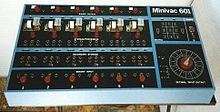Claude shannon
Claude Elwood Shannon (April 30, 1916 – February 24, 2001) was an American mathematician, electrical engineer, and cryptographer remembered as "the father of information theory".
Shannon is credited for founding the field of information theory with the landmark publication A Mathematical Theory of Communication in 1948. He is perhaps equally well known for laying the foundations of digital circuit design theory in 1937, at just 21 years of age. While doing his master's degree at the Massachusetts Institute of Technology (MIT), he demonstrated in his thesis that electronic applications of Boolean algebra could construct any logical-numerical relationship. Shannon also contributed to the field of cryptanalysis for the defense of the United States during World War II. World War, with works on codebreaking and security in telecommunications.
Early Years
The early years of her life were spent at Gaylord, graduating from high school in 1932. From a young age, Shannon displayed a distinct penchant for things mechanical. He stood out from his classmates in science subjects. His childhood hero was Edison, with whom he later discovered he was related and whose investigations he became quite close to.
In 1932 he entered the University of Michigan, where his sister Catherine received her doctorate in mathematics. In 1936 he obtained the titles of electrical engineer and mathematician. His interest in mathematics and engineering continued throughout his life.
In 1936, he accepted a position as a research assistant in the department of electrical engineering at the Massachusetts Institute of Technology (MIT). His situation allowed him to continue studying while working part-time for the department, where he worked on the most advanced analog computer of that era, Vannevar Bush's differential analyzer.
First discoveries
Complex Relay Circuits and Boolean Algebra
It was at this time that his interest in complex relay circuits arose. Trying to simplify relay switchboards, he realized that relays could be used to make calculations. Coupled with his taste for logic and Boolean algebra, he was able to develop this idea during the summer of 1937, which he spent at Bell Laboratories in New York City.
Boolean algebra and digital circuits
In his doctoral thesis at MIT he demonstrated how Boolean algebra could be used in the analysis and synthesis of switching and digital circuits. The thesis aroused considerable interest when it appeared in 1938 in specialized publications. In 1940 he was awarded the Alfred Noble Award for American Engineers by the American Society of Civil Engineers of the United States, awarded each year to a person no more than thirty years of age. A quarter of a century later, Herman Goldstine, in his book Computers from Pascal to Von Neumann , cited his thesis as one of the most important in history that helped change circuit design. digital.
During the summer of 1938 he did research work at MIT and was awarded the Bolles Fellowship while working as a teaching assistant while pursuing a doctorate in mathematics. In 1940 he studied for a master's degree in electrical engineering and a doctorate in the philosophy of mathematics.
Bell Laboratories
Shannon spent fifteen years at Bell Laboratories, a highly fruitful association with many leading mathematicians and scientists including Harry Nyquist, Walter Houser Brattain, John Bardeen, and William Bradford Shockley, inventors of the transistor; George Stibitz, who built relay-based computers; Warren Weaver, who wrote a lengthy and illuminating introduction to his work A Mathematical Theory of Communication and many others.
Mathematical theory of information
During this period Shannon worked in many areas, most notably in information theory, which was published in 1948 as A Mathematical Theory of Communication. In this work it was shown that all sources of information (electrical telegraph, telephone, radio, people talking, television cameras, etc.) can be measured, and that communication channels have a similar unit of measurement, determining the speed maximum transfer or channel capacity. He also demonstrated that information can be transmitted over a channel if and only if the magnitude of the source does not exceed the transmission capacity of the channel that carries it, and laid the foundations for error correction, noise suppression, and redundancy.
Computer Programming for Chess
In the area of computers and artificial intelligence, he published a paper in 1949 that described the programming of a computer to play chess, becoming the basis for later developments.
Other contributions and acknowledgments
In the field of library science and documentation, the Boolean development revolutionized searches in library catalogs or in databases of documentation centers.
Throughout his life he received numerous decorations and recognitions from universities and institutions around the world.
When asked by a journalist if machines could think, he replied: «Of course! You and I are machines and boy do we think!
Posts
Shannon, Claude Elwood (1948). «A mathematical theory of communication». Bell System Technical Journal 27 (379-423 and 623-656).
Shannon, Claude Elwood (1949). «Communication theory of secrecy systems». Bell System Technical Journal 28 (656-715).
Contenido relacionado
Point to point network
Twin turbo
NTFS
